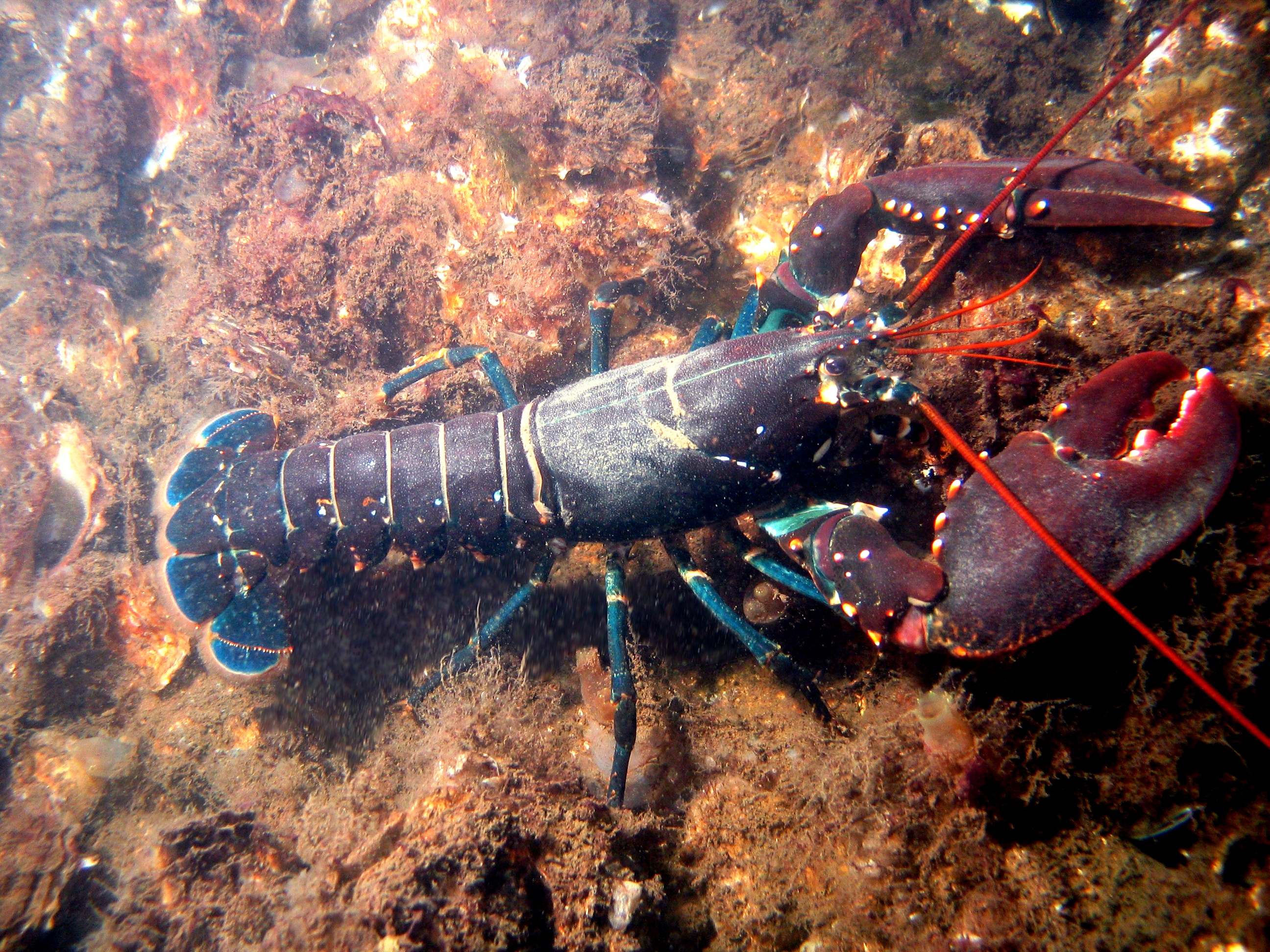
Lobster
Lobsters are malacostracans of the family Nephropidae (synonym Homaridae[2]). They have long bodies with muscular tails and live in crevices or burrows on the sea floor. Three of their five pairs of legs have claws, including the first pair, which are usually much larger than the others. Highly prized as seafood, lobsters are economically important and are often one of the most profitable commodities in the coastal areas they populate.[3]
This article is about clawed lobsters. For other uses, see Lobster (disambiguation).Commercially important species include two species of Homarus from the northern Atlantic Ocean and scampi (which look more like a shrimp, or a "mini lobster")—the Northern Hemisphere genus Nephrops and the Southern Hemisphere genus Metanephrops.
Distinction[edit]
Although several other groups of crustaceans have the word "lobster" in their names, the unqualified term "lobster" generally refers to the clawed lobsters of the family Nephropidae.[4] Clawed lobsters are not closely related to spiny lobsters or slipper lobsters, which have no claws (chelae), or to squat lobsters. The most similar living relatives of clawed lobsters are the reef lobsters and the three families of freshwater crayfish.
Longevity[edit]
Lobsters live up to an estimated 45 to 50 years in the wild, although determining age is difficult:[39] it is typically estimated from size and other variables. Newer techniques may lead to more accurate age estimates.[40][41][42]
Research suggests that lobsters may not slow down, weaken, or lose fertility with age and that older lobsters may be more fertile than younger lobsters.[43] This longevity may be due to telomerase, an enzyme that repairs long repetitive sections of DNA sequences at the ends of chromosomes, referred to as telomeres. Telomerase is expressed by most vertebrates during embryonic stages but is generally absent from adult stages of life.[44] However, unlike most vertebrates, lobsters express telomerase as adults through most tissue, which has been suggested to be related to their longevity. Telomerase is especially present in green spotted lobsters, whose markings are thought to be produced by the enzyme interacting with their shell pigmentation.[45][46][47] Lobster longevity is limited by their size. Moulting requires metabolic energy, and the larger the lobster, the more energy is needed; 10 to 15% of lobsters die of exhaustion during moulting, while in older lobsters, moulting ceases and the exoskeleton degrades or collapses entirely, leading to death.[48][49]
Like many decapod crustaceans, lobsters grow throughout life and can add new muscle cells at each moult.[50] Lobster longevity allows them to reach impressive sizes. According to Guinness World Records, the largest lobster ever caught was in Nova Scotia, Canada, weighing 20.15 kilograms (44.4 lb).[51][52]
Ecology[edit]
Lobsters live in all oceans, on rocky, sandy, or muddy bottoms from the shoreline to beyond the edge of the continental shelf, contingent largely on size and age.[53] Smaller, younger lobsters are typically found in crevices or in burrows under rocks and do not typically migrate. Larger, older lobsters are more likely to be found in deeper seas, migrating back to shallow waters seasonally.[53]
Lobsters are omnivores and typically eat live prey such as fish, mollusks, other crustaceans, worms, and some plant life. They scavenge if necessary and are known to resort to cannibalism in captivity. However, when lobster skin is found in lobster stomachs, this is not necessarily evidence of cannibalism because lobsters eat their shed skin after moulting.[54] While cannibalism was thought to be nonexistent among wild lobster populations, it was observed in 2012 by researchers studying wild lobsters in Maine. These first known instances of lobster cannibalism in the wild are theorized to be attributed to a local population explosion among lobsters caused by the disappearance of many of the Maine lobsters' natural predators.[55]
In general, lobsters are 25–50 cm (10–20 in) long and move by slowly walking on the sea floor. However, they swim backward quickly when they flee by curling and uncurling their abdomens. A speed of 5 m/s (11 mph) has been recorded.[56] This is known as the caridoid escape reaction.
Symbiotic animals of the genus Symbion, the only known member of the phylum Cycliophora, live exclusively on lobster gills and mouthparts.[57] Different species of Symbion have been found on the three commercially important lobsters of the North Atlantic Ocean: Nephrops norvegicus, Homarus gammarus, and Homarus americanus.[57]